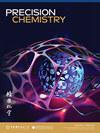Self-Assembled DNA Nanospheres: Design and Applications
引用次数: 0
Abstract
Self-assembled DNA nanospheres, as versatile and ideal vehicles, have offered new opportunities to create intelligent delivery systems for precise bioimaging and cancer therapy, due to their good biostability and cell permeability, large loading capacity, and programmable self–assembly behaviors. DNA nanospheres can be synthesized by the self–assembly of Y–shaped DNA monomers, ultra–long single-stranded DNA (ssDNA), and even metal–DNA coordination. Interestingly, they are size–controllable by varying some parameters including concentration, reaction time, and mixing ratio. This review summarizes the design of DNA nanospheres and their extensive biomedical applications. First, the characteristics of DNA are briefly introduced, and different DNA nanostructures are mentioned. Then, the design of DNA nanospheres is emphasized and classified into three main categories, including Y–shaped DNA unit self-assembly by Watson–Crick base pairing, liquid crystallization and the dense packaging of ultra–long DNA strands generated via rolling circle amplification (RCA), and metal–DNA coordination–driven hybrids. Meanwhile, the advantages and disadvantages of different self–assembled DNA nanospheres are discussed, respectively. Next, the biomedical applications of DNA nanospheres are mainly focused on. Especially, DNA nanospheres serve as promising nanocarriers to deliver functional nucleic acids and drugs for biosensing, bioimaging, and therapeutics. Finally, the current challenges and perspectives for self-assembled DNA nanospheres in the future are provided.自组装DNA纳米球:设计与应用
自组装DNA纳米球作为一种多功能的理想载体,由于其良好的生物稳定性和细胞渗透性、大负载能力和可编程的自组装行为,为创建精确的生物成像和癌症治疗的智能递送系统提供了新的机会。DNA纳米球可以通过y形DNA单体、超长单链DNA (ssDNA)的自组装,甚至金属- DNA配位来合成。有趣的是,通过改变一些参数,包括浓度、反应时间和混合比例,它们的大小是可控的。本文综述了DNA纳米球的设计及其在生物医学上的广泛应用。首先,简要介绍了DNA的特性,并介绍了不同的DNA纳米结构。然后,重点介绍了DNA纳米球的设计,并将其分为三大类,包括通过沃森-克里克碱基配对进行的y形DNA单元自组装,通过滚动圈扩增(RCA)产生的超长DNA链的液体结晶和密集包装,以及金属- DNA配位驱动的杂交体。同时,讨论了不同自组装DNA纳米球的优缺点。接下来,重点介绍了DNA纳米球在生物医学领域的应用。特别是,DNA纳米球作为一种有前途的纳米载体,可用于递送功能核酸和生物传感、生物成像和治疗药物。最后,对自组装DNA纳米球目前面临的挑战和未来的发展前景进行了展望。
本文章由计算机程序翻译,如有差异,请以英文原文为准。
求助全文
约1分钟内获得全文
求助全文
来源期刊

Precision Chemistry
精密化学技术-
CiteScore
0.80
自引率
0.00%
发文量
0
期刊介绍:
Chemical research focused on precision enables more controllable predictable and accurate outcomes which in turn drive innovation in measurement science sustainable materials information materials personalized medicines energy environmental science and countless other fields requiring chemical insights.Precision Chemistry provides a unique and highly focused publishing venue for fundamental applied and interdisciplinary research aiming to achieve precision calculation design synthesis manipulation measurement and manufacturing. It is committed to bringing together researchers from across the chemical sciences and the related scientific areas to showcase original research and critical reviews of exceptional quality significance and interest to the broad chemistry and scientific community.
 求助内容:
求助内容: 应助结果提醒方式:
应助结果提醒方式:


